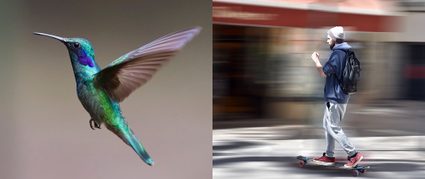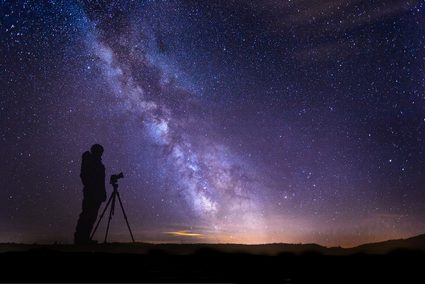Shutter Speed Calculator
This shutter speed calculator will help you estimate the correct shutter speed to use under any lighting condition, exposure value, aperture, and ISO settings.
In this calculator, you will learn the shutter speed definition in the What is shutter speed? section of this text. You will also learn what shutter speed does and how to calculate the shutter speed. Keep on reading to learn how you can improve your shutter speed photography with confidence by using slow shutter speeds and fast shutter speeds.
What is shutter speed?
In photography, we expose our film or camera sensor to light to capture an image. By opening what we call the shutter in our camera, we let the light into the camera through the camera's aperture. Closing the shutter will stop the light from coming in. How long we expose our film or sensor to the light affects the image we capture. To control this duration of exposure, we use our camera's shutter speed settings.
In short, the shutter speed's definition is that it is the speed at which the camera's shutter opens and closes to let in the light that produces an image.
What does shutter speed do?
Setting a fast shutter speed lets less light onto our camera's film or sensor. On the other hand, the longer the shutter speed is, the more we expose our film or sensor to the light. Shutter speed can be set to fractions of a second to "freeze" fast-moving objects. This setting is perfect for capturing moving subjects like a speeding vehicle, flying birds, or a running person.

Setting the camera to a slow shutter speed, such as for a couple of seconds or minutes, opens up possibilities for creative blurry shots or to let more light in to take images in low-light situations, light paintings, or of the Milky Way or other heavenly bodies.

To take sharp images of your subject at slow shutter speeds, it is best to keep the camera steady, like with a tripod. You can also "pan" your camera to track your subject just after releasing the shutter. When done right, you might capture a great shot with your subject in focus and the background in motion blur.
How to use our shutter speed calculator?
Using our shutter speed calculator is very easy. Select the lighting condition that your subject is in from the Lighting condition field. Then, select the aperture and ISO settings to show the shutter speed results instantly.
How to calculate shutter speed?
To calculate the shutter speed, we can use the formula that finds the exposure value. It uses a logarithmic property, and after rearranging the variables of this formula, we can derive the following formula:
where:
- – Shutter speed in seconds;
- – f-number of the aperture, like 2.8 for f/2.8;
- – ISO sensitivity, as in 100, 200, 400, and so on; and
- – Exposure value.
The shutter speed we get from this formula is the shutter speed needed to meet the lighting condition's exposure value at the chosen aperture and ISO settings.
Calculation of a shutter speed example
Let's say we are out in the woods under a clear night sky. We want to take some photos of the Milky Way galaxy with our camera, which is capable of up to ISO 6400 sensitivity and has an attached lens with a maximum aperture opening of f/2.8. From the table of equivalent exposure values in our exposure calculator, the Milky Way galaxy has an equivalent of EV-7 exposure value.
Using this information, we can then solve the duration of the shot for us to capture the Milky Way galaxy by substituting the above values in our formula, as shown below:
We should then set our shutter speed to 16 seconds to expose our film or camera sensor long enough to process the Milky Way galaxy from our calculation above. Since we are also performing slow shutter speed photography, don't forget to use a tripod to avoid blurring.

Please note that since cameras differ from each other slightly, it would be best to capture a test shot first and check if the current settings result in the photo you expected. If it did not, try changing some of the camera settings and see if that results in a better shot.
Want to learn more?
Shutter-speed photography is so much fun to explore. Learning what shutter speed does would definitely improve your photography game. If you found this shutter speed calculator informative, we also have lots of other photography-related calculators like our crop factor calculator and our image file size calculator that you can check out.
On the other hand, if you feel like making or building something, perhaps you would like to check our smartphone projector calculator, wherein you will learn how to make a DIY smartphone projector using just a box, a magnifying glass, and some crafting materials you might already have at home.